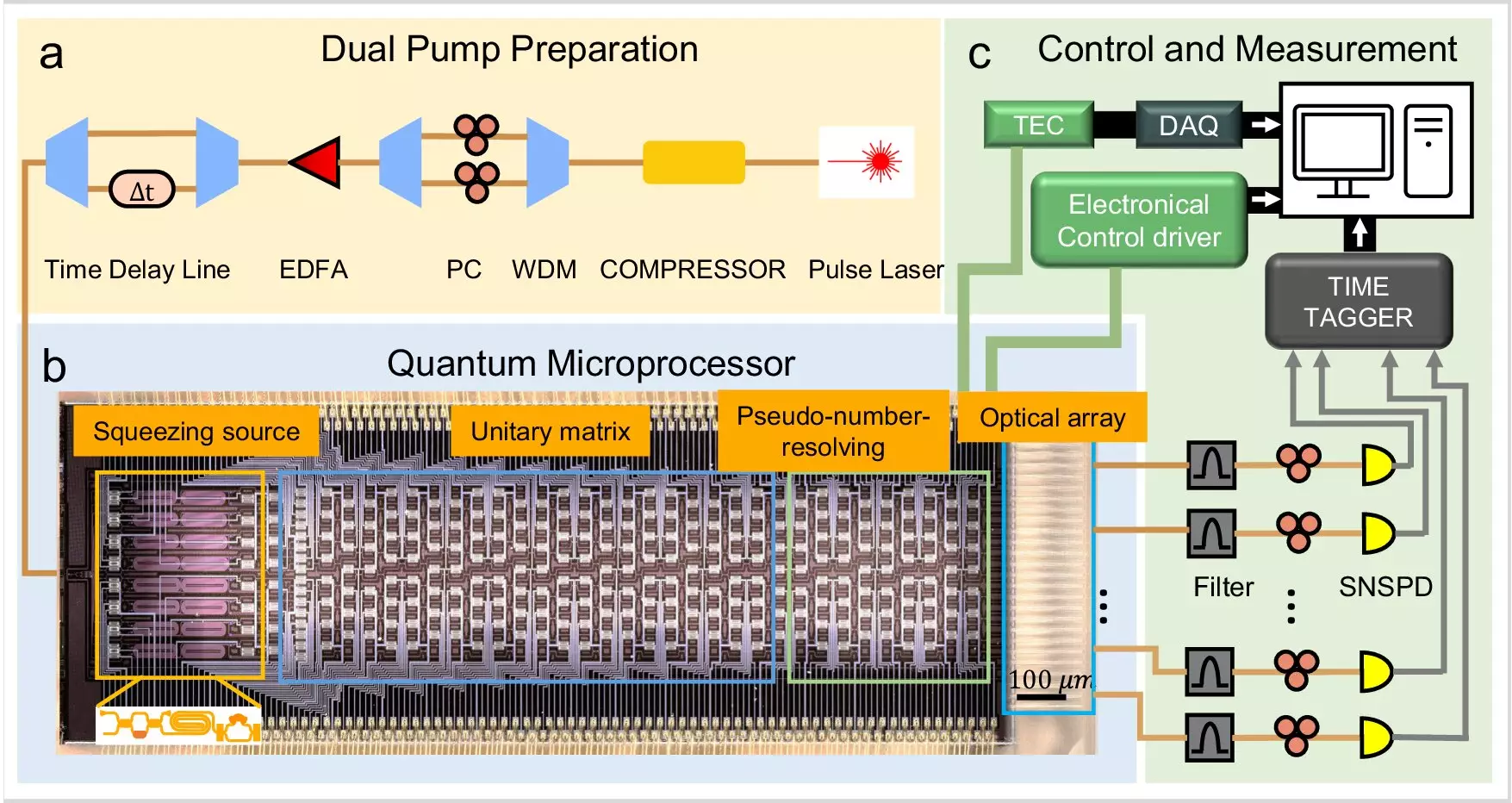Quantum simulation has transcended traditional computing methods, offering scientists an exceptional tool to model intricate systems that classical computers struggle to handle. This technology has a myriad of applications, extending from financial modeling and cybersecurity to pharmaceutical developments and artificial intelligence. Among various potential applications, the exploration of molecular vibronic spectra has emerged as a crucial area, particularly in the fields of molecular design and analytical chemistry. Despite its significance, accurately simulating these spectra presents substantial computational challenges, prompting researchers to pursue innovative solutions using quantum computing.
The intricacies of molecular vibronic spectra pose a long-term challenge for computational chemistry, one that has resisted effective solutions through conventional supercomputers. These spectral patterns provide critical insights into molecular properties, yet traditional methods fall short in dealing with the complexity and size of large molecules. As scientists push the boundaries of knowledge, the limitations of classical computing methods become increasingly apparent. Consequently, the need for advanced quantum computing solutions has intensified, making research into quantum algorithms and processors a priority for addressing these formidable challenges.
A remarkable stride in quantum simulation was achieved by a research team at The Hong Kong Polytechnic University (PolyU), led by Professor Liu Ai-Qun. The team has made professional strides by successfully creating a world-first quantum microprocessor chip specifically aimed at simulating molecular spectroscopy in complex molecules. This notable achievement heralds a new era for quantum applications within the realm of quantum chemistry, opening doors to problems that were previously deemed insurmountable by conventional computational standards.
The research group’s study, published in *Nature Communications*, titled “Large-scale photonic network with squeezed vacuum states for molecular vibronic spectroscopy,” showcases their innovative approach to achieving efficient simulations. The development of this chip is a testament to the potential of quantum technologies that harness quantum superposition and entanglement—phenomena that classical simulations cannot reliably replicate.
At the heart of this quantum microprocessor is a sophisticated linear photonic network integrated with squeezed vacuum states of quantum light, representing a significant technical undertaking. The 16-qubit design allows for precise molecular spectroscopy simulations, pushing the boundaries of what could be computationally represented. Through an intricate system that melds optical, electrical, and thermal technologies, the PolyU team developed a robust framework that supports programmable quantum algorithms, custom device drivers, and a user-friendly interface.
Dr. Zhu Hui Hui, a pivotal figure in this research and a Postdoctoral Research Fellow at PolyU, emphasized the potential of this quantum microprocessor. The team’s efforts have laid the groundwork for applying this technology to complex tasks, such as simulating large protein structures or optimizing molecular reactions.
Future Perspectives and Industry Implications
The implications of this cutting-edge research extend beyond academic interest; they hold substantial promise for practical applications across various industries. Quantum technologies are positioning themselves as essential components in material science, chemistry, and condensed matter physics. The integrated quantum microprocessor developed by the PolyU team represents a crucial step toward functional quantum information processing that can tackle industry-specific challenges, such as molecular docking issues and advanced quantum machine learning applications like graph classification.
Professor Liu articulated the ambitious future aims of the research, which include scaling up the quantum microprocessor to address even more complex applications poised to benefit society at large. As quantum technologies continue to evolve and gain traction, the capacity for achieving quantum speed-ups in real-world applications becomes increasingly attainable.
The advancements made by the PolyU research team signify a major leap forward in the field of quantum simulation, particularly in regards to molecular spectroscopy. By overcoming considerable computational barriers and engineering a functioning quantum microprocessor, they have opened vast new opportunities for understanding molecular interactions. As this technology continues to develop, it stands to redefine our capabilities in computational chemistry and quantum information processing, aligning scientific inquiry with real-world applications that could transform a variety of fields.


Leave a Reply